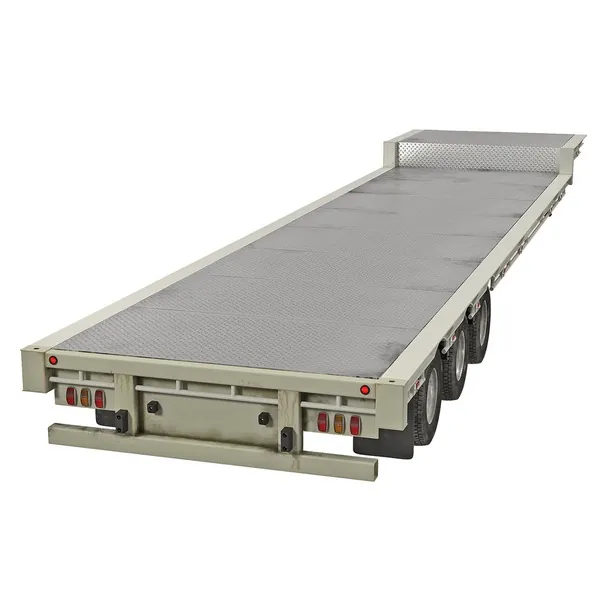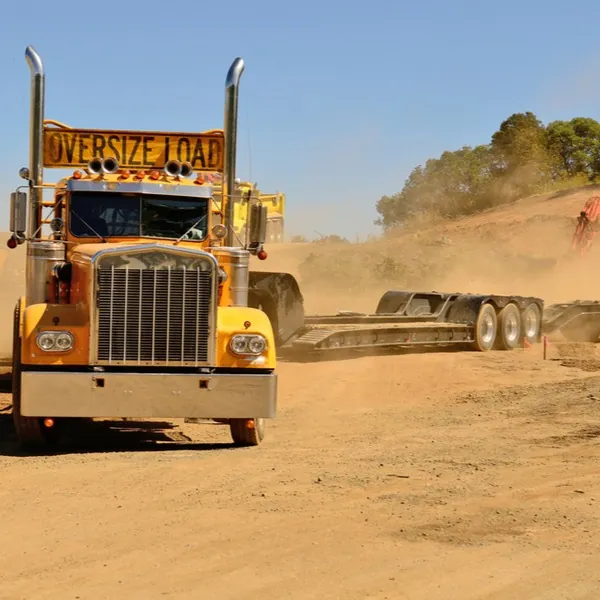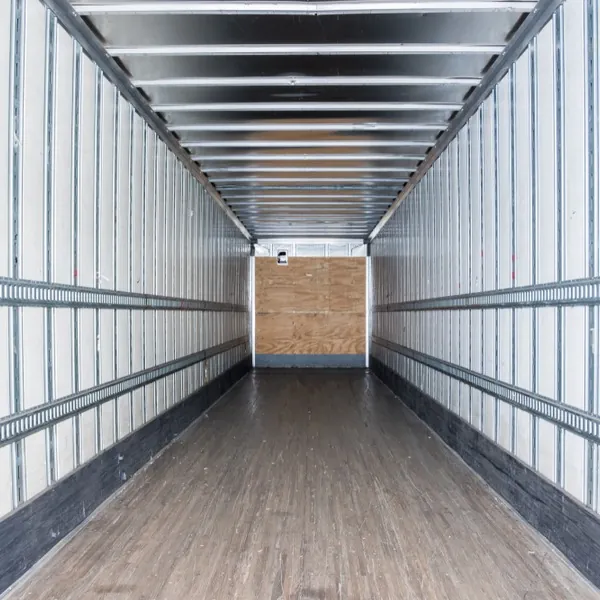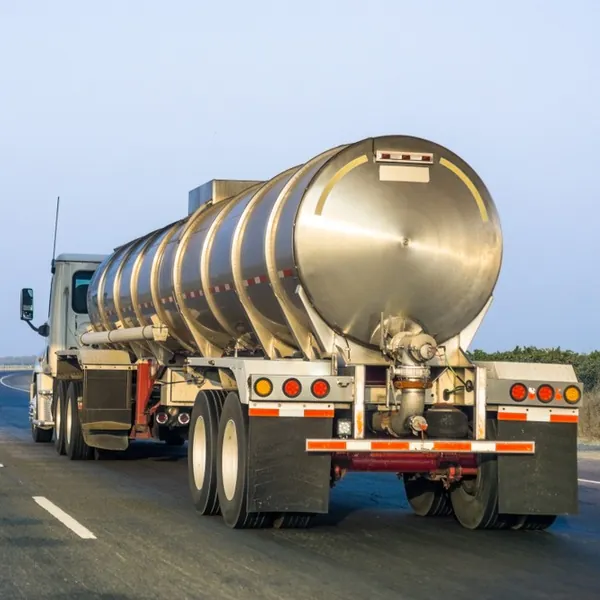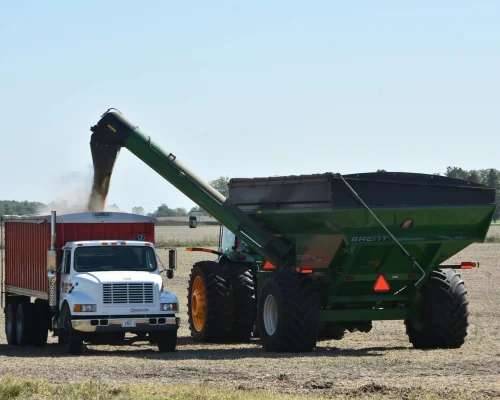Ever wonder why certain semi-trailers are used for specific purposes? You’ll find answers in this article.
Reefer Semi-Trailers
What is a Reefer Trailer?
Reefer semi-trailers transport refrigerated or frozen items across the country. Although not as common, reefers can also be set to a different setting in order to transport heated goods as well.
Reefers use either diesel fuel or electricity to power the cooling system. The interior of a reefer trailer consists of a lining made up of either aluminum or stainless steel and also has a floor drain.
Most reefers have a rear door that swings open to allow for easy loading and unloading. Many also feature side doors for additional access.
There are a number of different semi-trailers on the road today. But none more important in the world of food transport than reefer trailers. Reefer vans are the classic option, and they look just like a regular dry van trailer. The big difference is that reefer vans have cooling systems installed. Refrigerated containers, on the other hand, are stand-alone units.
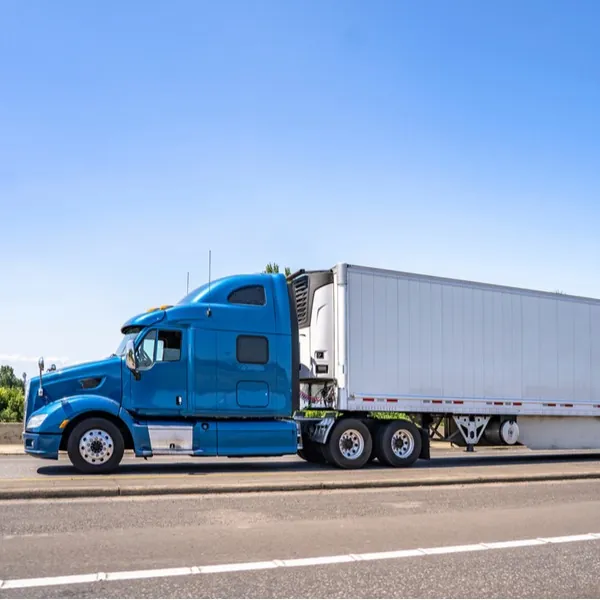
Different Semi-Trailers and Why You Should Use a Reefer
There are several types of reefer semi-trailers on the market. Some only have enough space to store a few pallets of goods, while others can accommodate several truckloads. The size and type of reefer you need will depend on the freight you’re hauling. The most common is the single-temp reefer, which can maintain one set temperature throughout the entire trailer.
This type of reefer is great for hauling perishables that need to remain at a consistent temperature, like produce or dairy. Another type of reefer is the multi-temp, or dual-temp, reefer. These trailers have two compartments that can be set to different temperatures.
This is ideal for hauling freight that needs to remain at different temperatures, like frozen and refrigerated items. Reefer trucks come with a number of features to ensure that your perishable cargo arrives at its destination in perfect condition. These features include:
-Temperature control: Reefers come with a thermostat that allows you to set and maintain the perfect temperature for your cargo. It is important to monitor your reefer’s temperature as your cargo will likely need to regulate between certain temps. For most produce items, temperatures should range anywhere from 30-55 degrees Fahrenheit.
For example, berries and apples need to remain on the lower end closer to 30 degrees. While sweet potatoes, cucumbers and squash can stay anywhere from 50-55 degrees with no problem.
-Ventilation: Reefers have vents that allow you to control the amount of airflow inside the trailer. This is important for regulating the temperature and preventing spoilage. Two common forms of continuous airflow ventilation include fresh air and a front vent door.
Reefer units that pull air in and exit it through the back, are known as the fresh air option. Or the front vent door option which allows air to flow throughout the trailer. If you’re transporting perishable goods, be sure to choose a reefer truck.
-Insulation: Insulation helps to keep the inside temperature of reefers consistent. Reefer trailer insulation includes 4 inches on the front wall, 2 inches on the inside walls and three inches on the back door.
–Flat/Grooved Floors: Reefer semi-trailers offer two different types of flooring options. For easier cleaning, smooth entry and exit of boxes and a stronger base, you should choose a flat floor. If you’re looking for more ventilation and a lighter option, you should choose grooved floors. Of course, with each advantage comes a disadvantage.
Flat floors will restrict air flow, meaning your boxes will need to be on pallets to receive proper ventilation. Grooved floors, while lightweight, are harder to clean and make you less mobile when trying to load or unload your cargo. Consider your own cargo before deciding which way to go with reefer flooring.
Reefer trucks are an essential part of the supply chain as there is a constant need to haul perishable goods nationwide every day.
Knowing Your Freight and Which Reefer to Choose
If you’re transporting perishable goods or items that need to remain at a certain temperature, it’s important to choose the right type of reefer truck. You need a truck that can maintain the proper temperature for your particular type of product. For example, frozen food must remain at 0° Fahrenheit (-18° Celsius), while fresh produce should balance between 32° and 40°F (0° and 4°C). Believe it or not, some reefer trailers can reach temperatures as low as -40° F.
Many people think of food when it comes to shipping with reefer trailers. But these semi-trailers can also accommodate other temperature-controlled items such as computer servers, pharmaceuticals, medical supplies and lubricants. When transporting items such as these, it’s important to be up-to-date on the current regulations surrounding the shipment of hazardous materials.
For more information on how to comply with regulations and properly package your items, visit the Federal Motor Carrier Safety Administration website. When you’ve done your research and are ready to contact us here at FreightCenter, be sure to include all the details of your shipment. This will help ensure we find the correct type of trailer for your load.
How Reefers Came to Be and Their Impact on the Trucking World
Throughout the 1800s and the better part of the early 1900s, there was no good way of transporting perishable food over long distances. Food items often went to waste as the use of ice blocks and coolers with fair insulation could not handle the means of cooling. It wasn’t until the early 1930s that a revolutionary invention would change the transportation game forever.
Fred Jones was an inventor who, at the time, was traveling around the country with a film crew. He quickly realized that the standard method for keeping food cold—ice blocks in an insulated box—was not working well. The ice would melt and ruin the food. So he set out to invent a better way to keep food cold during transport.
After years of trial and error, Jones finally created a portable cooling unit that could be used in any truck or van. This innovation revolutionized the transportation of perishable goods and made it possible for companies to transport food over long distances. Today, we take this technology for granted, but without it, we would not have the modern grocery store as we know it.
Reefer Trailer Specs
- Length – 48 feet to 53 feet
- Width – 8.5 feet
- Height – 13.5 feet
- Max capacity for 48-53 foot trailer – 42,000-45,000 pounds
Wrapping Up the Need for Reefer Trailers
Reefer freight is among the most important in the industry of logistics. Medications, hazardous materials, flowers and even paint need proper regulation in order to go from point A to point B without harm. As you read above, the reach and impact of reefer semi-trailers cannot be overemphasized. Without these trailers, we would still be living in the Stone Age!
Flatbed Semi-Trailers
What is a Flatbed Trailer?
A flatbed trailer is an open-air trailer used for the transportation of large, bulky and abnormal freight. A few examples of items you may see on a flatbed trailer include tractors, bulk machinery items like engines or transmissions or even vehicles. In addition to open-air style, flatbed trailers also come with the capabilities to enclose your goods if needed.
When selecting a flatbed trailer, the first thing you need to do is determine what you will be hauling and how much it will weigh. Flatbed semi-trailers come in various sizes, so you need to make sure you select the right size for your needs. If you plan on hauling large or bulky items, you will need a larger flatbed trailer. If you only plan on hauling smaller items, you can get away with a smaller flatbed trailer.
Once you have selected the right size and type of flatbed trailer, you need to select the right features for your needs. For example, if you plan on hauling large or heavy items, you will want a trailer with ramps. Ramps make it easier to load and unload items from the trailer. You also need to decide if you want an enclosed flatbed trailer or an open flatbed trailer.
Enclosed semi-trailers offer more protection for your cargo, but they are more expensive than open trailers. Finally, you should contact FreightCenter to help assist you with finding the best carrier for your cargo. When it comes to flatbed trailers, there are many different options available.
You need to select the right size, type, and features for your needs. With so many different options available, you should have no problem finding the perfect flatbed trailer for your needs.
Different Flatbed Trailer Types
Step Deck or Drop Deck – A step deck is a flatbed trailer that has a lowered deck in the front, which allows for taller loads. The max height for a step deck is 10’, and the max length is 8.5″. They can haul freight up to 48,000 pounds. Step decks are often best for hauling construction equipment, agricultural machinery, and other tall loads.
Double Drop/Lowboy – These semi-trailers offer the ability to ship extra-tall items that would not normally meet regular height restrictions. Freight can measure as high as 12″ tall but cannot exceed 14″ with the trailer height included. These trailers can carry loads from 40,000-45,000 pounds with the standard two axle makeup. Additional axles can help accommodate heavier loads.
RGN – A RGN (Removable Goose Neck) flatbed trailer is a type of trailer that has a lowered deck in the front and a gooseneck hitch in the back. This allows for loading and unloading from both the ground and docks. The max height for an RGN is 12’, and they can haul freight from 80,000-150,000 pounds. (Increased weight will require additional axles).
You should consider using an RGN when hauling heavy machinery and taller loads. The use of an RNG comes with a higher price tag due to its increased capabilities.
Stretch – A stretch flatbed is a trailer that is lengthened by adding an extra section in the middle. This allows for hauling longer loads. The max length for a stretch flatbed is 65’, and they can haul freight up to 80,000 pounds. You should consider using a stretch flatbed when hauling cars, trucks and other long loads.
Common Flatbed Trailer Uses
Now that we’ve gone over the various types of flatbed semi-trailers, it’s time to dive a little deeper into what kinds of freight these trailers transport. Thanks to their variety, flatbed trailers can carry a vast number of products from coast to coast. Have you ever wondered how tractors make it to and from the farm? They obviously aren’t driving these machines from the manufacturer.
Instead, they use flatbed trailers to transport them to their customers. It’s the same situation for larger items such as turbines, airplane parts and building materials. All of these things have the necessary means for transportation, and the use of flatbed trailers is the answer.
If you’re struggling to fulfill your shipping needs due to irregular items or oversized goods, give FreightCenter a call. Our friendly account managers can help assist you with any questions or needs you may have regarding a shipment.
Things to Remember about Flatbed Trailers
There are several reasons why shipping via flatbed is better than other methods. Shippers should keep these in mind next time they are questioning which route to go with their shipping needs. First, it is much more efficient. There is no need to load and unload the cargo onto and off of a pallet or into and out of a container.
Second, it is safer. The cargo is less likely to experience any damage in transit when it is not moving around as much. Third, it is more cost-effective. And fourth, it allows for easy loading and unloading of heavy or bulky items. Finally, it offers greater flexibility in terms of routing and destination choices.
Lowboy Semi-Trailers
What is a Lowboy Trailer?
A lowboy semi-trailer is a specially designed trailer that features a lower deck, which helps it transport tall and heavy items. Lowboy Trailers specializes in hauling heavy-duty construction equipment and machinery. The low deck height makes loading and unloading easier and safer because it reduces the angle of approach.
If you’re in the market for a lowboy trailer, there are a few things you need to keep in mind. First, you need to decide on the right axle setup. There are two main types of lowboy trailers–single axle and tandem axle. Each has its own benefits and drawbacks, so it’s important to choose the one that best suits your needs.
Single-axle lowboy trailers are more maneuverable than tandem-axle lowboys, but they can only carry about half the weight. That’s why they’re typically used for hauling lighter loads such as skid steers, mini excavators, and ATVs. Tandem axle lowboys can carry twice the weight of a single axle lowboy, making them better suited for hauling heavy construction equipment such as bulldozers and backhoes.
Why You Should Use a Lowboy Trailer
There are many benefits to using a lowboy trailer for your shipping. First, lowboy trailers offer shippers the opportunity to ship with extended height limits. Due to their lowered decks, lowboy trailers can haul items up to 14 feet tall. Other trailers cannot reach this feat.
In addition to the advantage of hauling taller items, lowboy semi-trailers also provide their cargo with more stability thanks to their lowered decks. This ensures a less rugged trip and an overall safer ride. Lowboy trailers also offer an added level of safety as cargo is easily loaded and unloaded due to their conveniently low decks, making it less likely for an accident to occur while hauling heavy loads.
Different Types of Lowboy Semi-Trailers
Fixed Gooseneck Lowboy – Fixed gooseneck lowboys are some of the most versatile semi-trailers on the market, thanks to their adjustable gooseneck. This flexibility allows for easier loading and unloading of equipment.
Though their primary usage is for hauling heavy equipment, such as construction machinery or agricultural equipment, they can also haul vehicles or other large loads. If you need a trailer that can handle a heavy load and is built to last, a fixed gooseneck lowboy is an excellent choice.
Fixed Neck Lowboy – A fixed neck lowboy offers a lightweight option but comes with its disadvantages. Unlike the fixed gooseneck, a fixed neck lowboy will hinder your access to the trailer. So you’ll be giving up easy access for the chance to carry heavier loads.
Removable Gooseneck Lowboy (RGN) – As the name states, removable gooseneck lowboys allow the transporter to remove the gooseneck, allowing easier access to the load. There are several benefits of using RGNs. First, they can help you transport just about anything. This is due to their versatility and heavy-duty build.
Second, RGNs are easier to maneuver than other types of semi-trailers. This is because they have a lower center of gravity which makes them more stable on the road. Third, RGNs don’t require as much maintenance as other types of trailers. This is because they’re built to last and can take a beating without breaking down.
If you’re in need of a heavy-duty hauler, then an RGN is the way to go. If you do decide on using an RGN, there are two types to consider, hydraulic and mechanical. Hydraulic RGNs offer the convenience of using a hydraulic system to lower the deck.
The downside, though, is these RGNs are not capable of carrying as much freight due to the weight of the hydraulic system. Mechanical RGNs offer a lightweight alternative that allows for heavier loads. This makes them a top choice for long-distance transportation.
Lowboy Trailer Specs
Lowboy trailers come in a variety of different makes and models. Due to these variations and different features, the dimensions and hauling capabilities of each trailer will vary. These are the maximum dimensions for lowboys:
- Length: 24 ft to 29.5 ft.
- Width: No wider than 8.5 ft.
- Height: Well height – 18 feet to 24 feet. Max freight height – 12 feet. With the trailer included, the overall max height is 14 feet.
- Weight: For two axles, the weight limit is 40,000 pounds. With additional axles, they can carry up to 80,000 pounds.
Final Things to Consider When Choosing a Lowboy Trailer
Another important consideration when choosing a lowboy trailer is what type of suspension it has. Lowboy semi-trailers can come with either air ride, single point, mechanical, or rigid suspensions. Air ride suspension offers a lot of upsides but at an inflated cost compared to other options. Stability and damage control make air ride a frontrunner choice.
Single-point is also expensive but extremely helpful in preventing wear and tear on your trailer. Single-point is best for heavier than usual loads. If you are looking for an inexpensive option compared to single-point, you should go with mechanical suspension. Mechanical offers stability but at a lower cost. Finally, rigid suspension should be considered for low-speed transportation. While inexpensive, it comes with fewer perks.
When it comes to choosing a lowboy trailer, there’s no one-size-fits-all solution. The best trailer for you will depend on the type of loads you plan to haul and your budget. But with so many different options available, you’re sure to find a lowboy trailer that meets your needs. Contact FreightCenter today to receive a free quote on your next lowboy trailer shipment. Our team of trusted agents can help you tackle any and all of your shipping needs.
What is a Dry Van?
A dry van is your typical enclosed box-style semi-trailer that transports goods nationwide. This type of trailer is the most popular and versatile on the market. This is because it can carry nearly anything that will fit in its dimensions. Some common commodities shipped via dry van include appliances, building materials, car parts, furniture, and general freight.
A dry van is likely your best option if you’re shipping large, standard items that don’t require a controlled environment. It offers more protection than an open trailer but is less expensive than a reefer or flatbed. Plus, there’s no need to worry about securing your load since everything will be inside the trailer.
There are a few things to keep in mind when using a dry van, however. Items bound to a pallet should be properly packaged so they can withstand being jostled around during transport.
You’ll also want to avoid shipping anything that could spoil or melt since there is no way to control the temperature inside the van. The first dry van semi-trailers were built in the 1950s, and since then, their popularity has only grown. Today, they are one of the most commonly used types of trailers on the road.
In fact, according to the Association of American Railroads, about 60% of all rail shipments in North America are transported in dry van trailers. All in all, dry vans are a great option for a wide variety of shipments. If you have any questions about whether or not this type of trailer is right for your load, contact us at FreightCenter, and we’ll be happy to help!
Advantages of Using a Dry Van
Dry vans are the most common type of trailer on the road, which makes them easier to find and book. They are also less expensive than other types of trailers, such as reefers (temperature-controlled semi-trailers). Dry vans offer more cargo space than reefers since they don’t have to accommodate temperature-control equipment.
This makes them ideal for shipments that are too large for a reefer, such as furniture or bulk commodities. Dry vans popularity stems from their convenience and affordability. A large variety of carriers use dry vans, making them extremely easy to locate.
Another advantage of dry van trailers is that they can accommodate a wide range of commodities. Dry vans can ship a wide variety of items from furniture, electronics, and clothing. Shipping with dry vans ensures all cargo is protected thanks to the enclosed trailer. This versatility makes them a popular choice for many businesses.
Dry van trailers also have a few disadvantages. One is that they cannot transport perishable or temperature-sensitive commodities. Another is that they are not as secure as some other shipping options, such as intermodal containers. This can be an issue for high-value or sensitive shipments.
Despite all of this, dry van semi-trailers remain a popular choice for many businesses. Mainly due to their cost-savings advantages and versatility. When shipping cargo that is not perishable or temperature-sensitive, dry van trailers offer an affordable and convenient option.
If you have a shipment that needs protection from outside elements and doesn’t require temperature control, dry van shipping is the way to go. Request a free quote from FreightCenter today, and we’ll help you get your shipment in a dry van and on the road.
Dry Van Trailer Specs
- Straight or Box Truck – Measures 24′ x 8′ x 8′ 6 inches. Sizes for these trucks vary. This means load management will be determined based on the size of your truck.
- Pup Trailer – 28′ Truck used for LTL shipments – Measures 28′ x 8′ x 9′. It can carry 14 pallets and up to 22,500 pounds of freight.
- Standard Trailer – 53′ Trailer – Most commonly used dry van – Measures 53′ x 8′ 6″ x 8′ 6 inches. It can carry 26 pallets and up to 45,000 pounds of freight.
Other Types of Semi-Trailers
Livestock Trailers
The four trailer types listed above are the most commonly used in the world of Less-Than-Truckload (LTL) and Truck-Load (TL) shipping and make up a majority of the semi-trailers on the road. There are also a variety of other semi-trailer types that transport goods from point A to point B every day.
Livestock, tanker, and grain trailers are just as important in the transport of goods and they aid a number of different hauling situations.
There are a few key factors to consider when choosing the right livestock trailer for your needs, such as:
- The type of livestock you will be transporting
- The number of animals you need to transport
- The distance you will be traveling
- Your budget
Once you have considered these factors, you can start browsing the different types of trailers available. Some common styles of livestock trailers include:
Gooseneck semi-trailers: Gooseneck trailers attach to the bed of a pickup truck, and they typically have solid sides and ramps for loading and unloading animals. These semi-trailers offer increased stability and motion, making them ideal for transporting heavy livestock over long distances.
Flatbed trailers: Flatbed trailers are the most common type of livestock trailers, as they can easily attach to any type of vehicle. These trailers offer a wide, open space for livestock, making them ideal for transporting large animals such as cattle.
Utility trailers: Utility trailers are typically enclosed and feature side or rear doors for loading and unloading livestock. These trailers offer protection from the elements and keep livestock secure during transport.
With the wide variety of livestock trailers comes convenience. Those who are looking to haul short or long distances should consider these options when choosing the right trailer for their needs.
Living quarters trailers: These trailers offer the ability to save on travel by allowing the owner to bunk in a separate cabin from their livestock. One section of the trailer comes with living quarters, commonly including a bedroom, bathroom, living area, and kitchenette. The other section keeps your livestock secure as you haul or post up for the night.
Stock Box: This type of trailer is for shorter distances and can sit conveniently in the bed of a pickup truck for easy loading, unloading, and hauling.
No matter what type of livestock trailer you choose, it is important to ensure that it is ready to safely transport your animals. Some features to look for in a livestock trailer include:
- A ramp or gangway to allow animals to safely enter and exit the trailer
- Sturdy partitions or pens to keep animals secure during transport
- Adequate ventilation to ensure the health and comfort of animals
- Tie-downs or chains to secure animals within the trailer
- Non-slip flooring to prevent animals from slipping and falling
When transporting livestock, it is important to follow all safety regulations to ensure the health and well-being of both the animals and the humans involved. Be sure to check with your local department of transportation for specific regulations regarding the transport of livestock.
Tanker Trailers
Tanker trailers specialize in hauling liquid or gaseous materials, which makes them the most regulated trailers on the roads due to the serious nature of their cargo. The first and foremost regulation for tanker trailers is the vehicle’s stability. Tankers achieve stability through two main methods: axle spacing and load distribution.
Axle spacing refers to the distance between the axles on the trailer. The greater the distance, the more stable the trailer will be. Load distribution is how evenly the weight of the cargo is spread out across the trailer. If you do not distribute weight evenly, it can cause instability and make turning or stopping difficult.
In addition to ensuring that the trailer is stable, operators must also take care when loading and unloading cargo. Tanker trailers come with a number of safety features, including fire extinguishers, spill containment systems, and emergency shut-off valves. However, it is still the responsibility of the operator to know how to use these features properly and to follow all safety protocols.
Operators must also be aware of the specific regulations that apply to the type of tanker trailer they are using. For example, food tankers have different regulations than chemical tankers. Familiarity with these regulations is essential to avoid potential fines or penalties.
Food Tankers – Food tankers help transport items that need to be moved following manufacturing. These semi-trailers have a special design that allows them to transport these items safely and under strict regulations.
Food tankers are an important part of the food supply chain because they provide a safe and efficient way to transport large quantities of food products. Without these tankers, the food and beverage industry would not be able to function.
Food tankers transport a number of different food items, such as:
- Fruit juices
- Sugar syrup
- Vegetable oils
- Beverages
- Wine
- Condiments
Each of these products needs to remain at a specific temperature to maintain quality, so the tank’s insulation is critical. The type of liquid you are transporting will dictate the different types of valves and pumps your tanker will have. The exterior of the tanker is also important. Drivers should frequently clean the exterior of their tanks. The tanks must also be resistant to corrosion. Stainless steel is the preferred choice for food tankers because it meets both of these requirements.
Fuel Tanker – The most common grades of fuel carried by tankers are gasoline, diesel, and kerosene. However, some tankers may also carry other types of fuel, such as ethanol or biodiesel. The capacity of a fuel tanker can vary widely. Some carry just a few thousand gallons, while some total over 50,000 gallons. Baffles divide the fuel tanker’s compartments.
These are plates that help to stabilize the liquids within the tank and prevent them from mixing. Baffles also create pockets of air, which act as cushions in the event of a collision. Tankers typically have between five and seven compartments, each holding a different type or grade of fuel. Fuel tankers must comply with strict safety regulations in order to protect both the drivers and the cargo.
Tankers also feature multiple safety features, such as fire extinguishers, emergency exits, and spill containment systems. Drivers must also receive special training to operate a fuel tanker safely. Despite the numerous safety precautions that are in place, fuel tankers still pose a significant risk to both people and the environment.
Tanker accidents can often result in serious injuries or even death, as well as extensive property damage. Because of these dangers, it is important for drivers to exercise caution when operating these vehicles. By following all safety protocols and paying close attention to the road, drivers can help prevent accidents and protect themselves and the environment.
Chemical Tankers – chemical tankers transport a variety of dangerous chemicals and flammable liquids. These products must be stored in specially designed tanks that are made from materials that will not react with the products being transported. The most common type of chemical tanker is the stainless steel tanker.
These tankers are resistant to corrosion and can safely transport a wide range of chemicals. However, some chemicals are so corrosive that they require the use of an FRP tanker. FRP tankers consist of fiberglass-reinforced plastic, which is inert to many corrosive substances.
Chemical tankers vary in size, but most are between 42 and 45 feet long. They have a capacity of between 1,000 and 3,500 gallons. The size and capacity of the tanker will depend on the type of chemicals it will transport. Tankers that carry corrosive materials usually have a smaller capacity than those that carry flammable liquids.
This is because corrosive materials can eat through the walls of the tank, making it more likely to leak. Chemical tankers must be operated by specially trained drivers who are familiar with the products they are carrying.
These drivers must know how to properly load and unload the tankers, as well as how to safely transport them. They must also be aware of the dangers that come with the chemicals they are carrying and take precautions to avoid spills or leaks.
Grain Semi-Trailers
The agriculture business uses a wide variety of semi-trailers, from planting to harvest. While less common in our world of shipping, it is important to become familiar with the various types of grain trailers.
Hopper – Hopper semi-trailers (hoppers) are a specialized type of agriculture trailer that is used for hauling grain. These trailers have two hoppers, one at the front and one at the rear, which can open and close to control the unloading of the grain. The operator uses a crank handle to open and close the sliding plates at the base of the hoppers.
Hopper trailers are a convenient way to transport grain from one location to another, and they can service a variety of farming applications.
Hoppers are designed for use with tractors, though they can be pulled by other vehicles with the proper hitch. The hitch used must be able to support the weight of the trailer, as well as the loads being hauled. Hoppers are not recommended for hauling livestock, as the animals can easily escape from the open hoppers.
If you are looking for a trailer to haul grain, a hopper is a good option. These semi-trailers are durable and offer a high payload capacity. With proper care, a hopper trailer will last for many years.
Belt – Belt trailers are a fast and efficient way to unload your product and require minimal labor. Drivers can simply operate the belt from the cab of the trailer and unload an entire haul in just a few minutes.
This makes belt trailers ideal for hauling large loads or products that need to be unloaded quickly. Belt trailers can haul a wide variety of materials, such as grain, seed, gravel, and more.
Belt trailers are safer for both the driver and the product. The hydraulics or electronic belt prevents the load from shifting during transport, helping to avoid serious accidents. The belt also protects the product from being damaged during transport. Belt trailers are more expensive than other types of trailers, but their safety and efficiency make them worth the investment.
If you are looking for a trailer that will keep your product safe and help you unload quickly, a belt trailer is the right choice for you.
Wrapping Up the Vast World of Semi-Trailers
Whether you’re looking to ship frozen goods from Tampa to Detroit or need help transporting a pair of new engines from Tulsa to Baltimore for a rebuild project, FreightCenter can assist you! Give us a call, and we’ll match you with the best carrier for your load. Give us a call today to receive a free shipping quote for your next shipment.
Whether you’re a new customer or a savvy shipping veteran, FreightCenter will be happy to answer any and all shipping questions!

